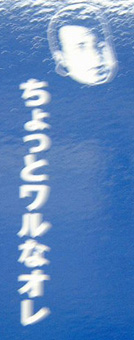Ore/boku/kimi etc.
Japanese has a variety of personal pronouns, rather more than are found in
English. For 'I', for instance, Japanese has pronouns like watakushi, watashi,
atashi, washi, boku, ore, and uchi, each with a distinctive usage.
Watakushi is quite formal
Watashi is less formal and feminine in feeling
Atashi is feminine
Atai is feminine, juvenile, and more stereotyped than actually used
Washi is typical of old men in regional areas
Boku is an informal term broadly used by men from childhood right through
to old age
Ore is a rough male usage,
Uchi means 'inside' or 'home'. It was originally used where a person was talking
on behalf of their family, company, etc.
These can be made plural by the addition of -domo or -tachi for more formal
terms and -ra for more informal terms, thus watakushi-domo or watakushi-tachi,
washi-ra, boku-ra, ore-ra, etc.
The same goes for the second person ('you') and third person ('he / she / it
/ they') pronouns.
Many of these pronouns are supposed to be written in Chinese characters. Watashi
is  ,
boku is ,
boku is  ,
ore is ,
ore is  ,
kimi is ,
kimi is  . .
Thus it is interesting to find that many signs and advertisements in public
places use katakana for such pronouns, as can be seen from the following
examples.
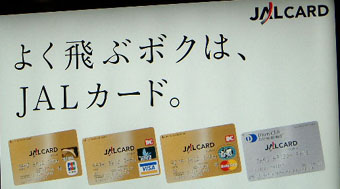 Yoku tobu boku wa, JAL kaado
Yoku tobu boku wa, JAL kaado
I who fly often, [use] JAL card |
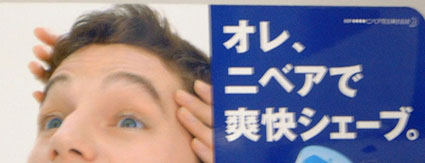 Ore, Nibea de sōkai sheebu
Ore, Nibea de sōkai sheebu
I get a refreshing shave with Nivea |
|
Chotto waru na ore
Just a little bit bad ol' me |
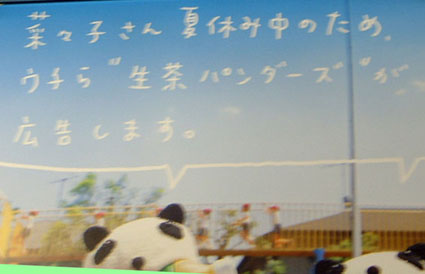 Nanako-san natsu-yasumi-chū no tame, uchi-ra Nama-Cha
Pandaazu ga kōkoku shimasu.
Nanako-san natsu-yasumi-chū no tame, uchi-ra Nama-Cha
Pandaazu ga kōkoku shimasu.
Because Nanako is on summer holidays, we the Nama-cha Pandas will do the
advertising. |
|
Kimi wa Ajia saidai-kyū no
kyōryū wo hakken dekiru?
Can you discover the largest dinosaurs in Asia? |
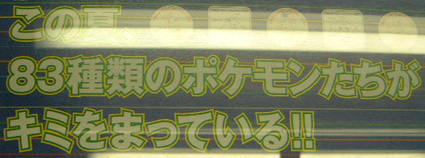 Kono natsu, 83-shurui no Pokemon-tachi ga kimi o
matte iru!!
Kono natsu, 83-shurui no Pokemon-tachi ga kimi o
matte iru!!
This summer, 83 types of Pokemon are waiting for you!! |
It is interesting to speculate on the reason for this practice. It may be related
to the Japanese tendency to use hiragana rather than Chinese characters
(kanji) for function words. This is especially the case since the characters
in question have particular meanings. The character  means 'servant', the character
means 'servant', the character  means 'master', etc. Using kana leaves these specific meanings behind.
For advertising, in particular, such meanings may be intrusive and avoiding
characters gives an up-to-date image.
means 'master', etc. Using kana leaves these specific meanings behind.
For advertising, in particular, such meanings may be intrusive and avoiding
characters gives an up-to-date image.
Of course, some pronouns still use kanji, especially watashi, as in
the following advertisement.
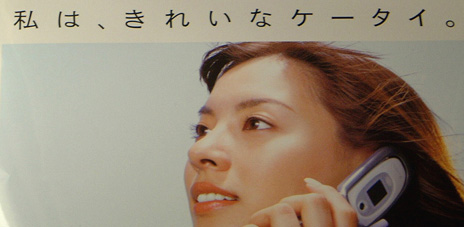 Watashi wa, kirei na keetai
Watashi wa, kirei na keetai
I like an attractive/pretty/clean mobile phone. |
The following are the results of a Google search on the Internet (August 2003).
Ore
| Form |
No. of occurrences |
 |
2,610,000 |
 |
653,000 |
 |
338,000 |
Boku
| Form |
No. of occurrences |
 |
2,910,000 |
 |
625,000 |
 |
452,000 |
Kimi
| Form |
No. of occurrences |
 |
3,160,000 |
 |
179,000 |
 |
162,000 |
Note that  can also be read kun, which distorts the results.
can also be read kun, which distorts the results.
|


